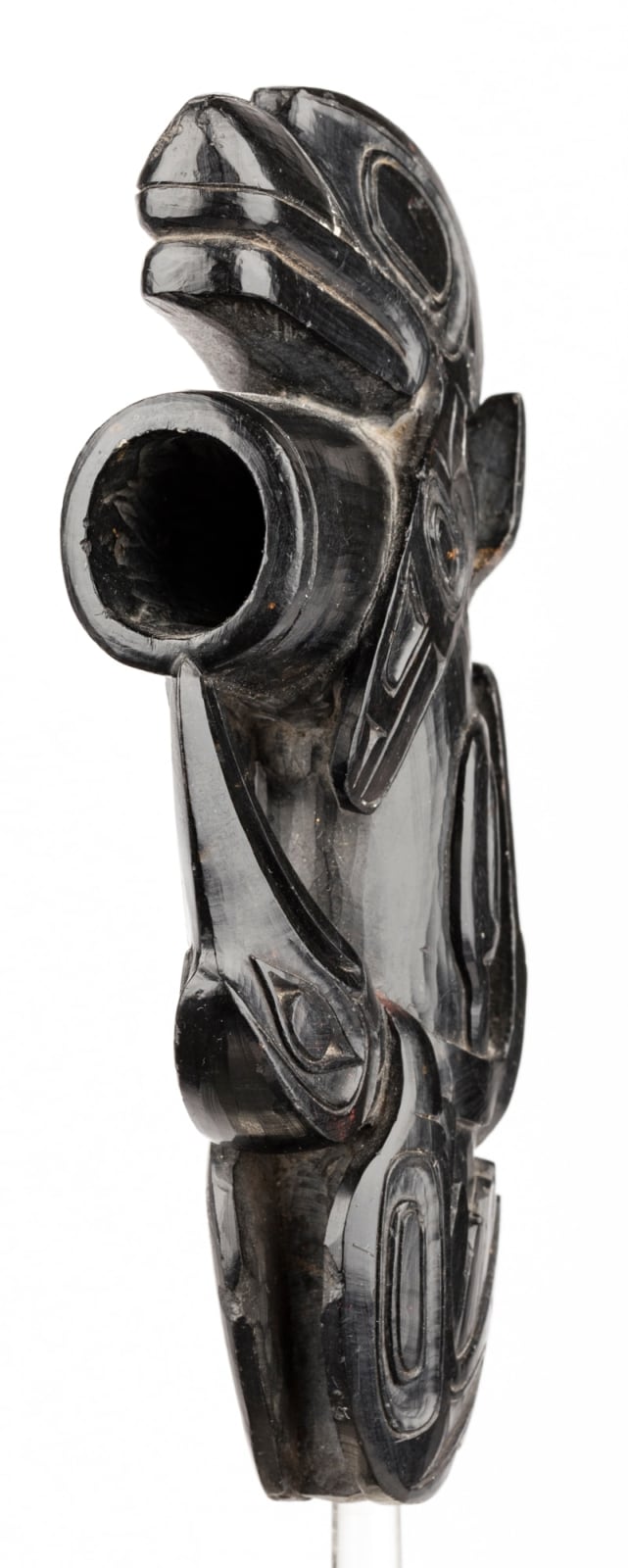-
Artworks
UNIDENTIFIED HAIDA ARTIST
Ceremonial Pipe, c. 1835argillite, 4.5 x 2.5 x 0.75 in (11.4 x 6.3 x 1.9 cm), measurements reflect dimensions without later added acrylic base, with: 5.5 x 2.75 x 1.25 in (14 x 7 x 3.2 cm)
unsigned.LOT 120
ESTIMATE: $2,500 — $3,500
PRICE REALIZED: $5,520.00Further images
Beginning around 1825, smoking pipes were among the first objects carved from argillite for sale to Euro-American traders and their ship’s crews. Some of the earliest pipes were based on...Beginning around 1825, smoking pipes were among the first objects carved from argillite for sale to Euro-American traders and their ship’s crews. Some of the earliest pipes were based on the typical clay pipes of Europeans with long thin stems, their bowls embellished with sculptural forms like human or animal heads. As time went by, pipes became more and more elaborated with overlapping and interlocking figures, to the point that a bowl and stem became much harder to distinguish. Eventually, the panel pipe form became prominent. These were made with a highly pierced and overlapped group of figures, and a long, tapering shape with a narrow cross-section. This pipe is of an intermediary form, having an irregular width and no straight bottom, being made to fit in the palm of one’s hand. Two main figures are represented, a whale and a raven, whose body parts wrap around a visible pipe bowl and short, wide, tapering stem. The whale’s head, with a small human face in the blowhole position, is at the end of the pipe, its pectoral fins wrapping around the juncture of the pipe bowl and stem. The whale’s double-fluked tail protrudes beneath the pectoral fins and lies against the body below the blowhole. The raven’s head angles upward with the tip of the beak touching the upper edge of the pipe bowl. The raven’s wings envelope the tapered end of the pipe stem, and its legs and feet are laid on each side of the stem. The bird’s tail has a large human face at its base, and two formline feathers extending along the bottom of the pipe to just beneath the whale’s tail.
Steven C. Brown
References: See the section on early ceremonial pipes in Peter L. Macnair and Alan J. Hoover, The Magic Leaves: A History of Haida Argillite Carving, (Victoria: Royal British Columbia Museum, 2002), pp. 23-25. For other examples see Leslie Drew and Douglas Wilson, Argillite: Art of the Haida, (Vancouver: Hancock House Ltd., 1980), pp. 58, 160. See also First Arts, Toronto, 12 July 2020, Lot 53.Provenance
Isaacs Gallery, Toronto;
Private Collection, Toronto;
Estate of the above.
Join our mailing list
* denotes required fields
We will process the personal data you have supplied in accordance with our privacy policy (available on request). You can unsubscribe or change your preferences at any time by clicking the link in our emails.










